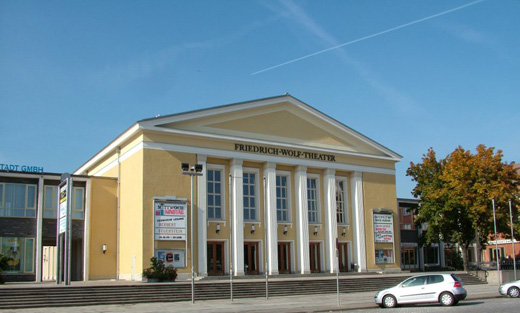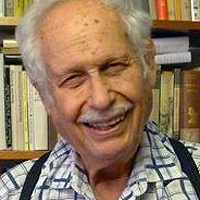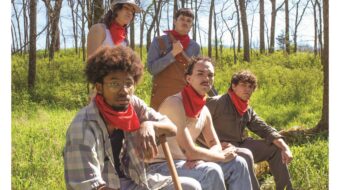
BERLIN — The New York Times printed a long article about a small city in East Germany, Eisenhüttenstadt (Iron Mill City), which was founded around a new iron and steel strip mill in 1950 and originally called Stalinstadt. As with my own avenue in Berlin, Stalinallee, now Karl Marx Allee, the name was finally changed in 1961. I had visited Eisenhüttenstadt a number of times, and had read more than a few articles in the New York Times about life in the one-time German Democratic Republic, or GDR, so, when I started to read the article, I expected to get angry, bitter, sad — or all three.
But to my great surprise, this article, by some miracle, turned out to be quite honest. The author, Melissa Eddy, did not embroider what she saw or heard. The result did indeed tend to make me angry, sad and bitter. But this time it was not because of prejudice or dishonesty but because of the story she told.
She writes that the city enjoyed special privileges: “It was favored with hard-to-get goods and cultural offerings like a new theater and commissioned artworks that graced courtyards.” This is indeed true — yet is only part of the story. Eisenhüttenstadt was only the first one of five or ten such big urban districts constructed in GDR days near mostly new or greatly enlarged industrial plants where thousands of people then worked, shopped and spent their leisure hours.
And they too were similarly favored. There were large housing projects centered on industries like urgently needed coal, gas and power plants, shipyards, chemical factories, a cotton spinning mill, or older centers like the famous Zeiss glass and optics plant in Jena. Like Eisenhüttenstadt they attracted young people from surrounding rural areas, and they were indeed all favored with first chance at goods in scarce supply – like the most fashionable apparel, new cars, and fruit from tropical countries. Most if not all had big, elaborate cultural centers with concerts, instrumental, hobby and sports groups; many had theaters – though here Eisenhüttenstadt was perhaps especially favored. I recall translating in that big theater for the touring American composer and singer Earl Robinson and his two accompanying musicians – introducing people there to songs like his own Joe Hill, The House I Live In, The Ink is Black and other folk and protest songs. But almost every GDR city of even medium size had a theater, usually with opera, operetta, drama, children’s drama and frequently ballet.
As Eddy mentions, many prominent sculptors created statues for Eisenhüttenstadt. But then, for many years, a certain percentage of building costs had to be spent on statues, gardens, murals and other art works at all major construction sites, not only there. Some of them still remain.
Eisenhüttenstadt was the first of many such sites. Many or most were built in backward areas struggling with a long history of underdevelopment, often worsened by ravages of the war. They represented new hopes, and were all characterized by a feeling of security; no one feared a loss of a job (or problems in finding a new one if dissatisfied); although rent usually amounted to about a tenth of income, evictions were forbidden by law.
Nor were there any financial worries about health treatment or medicine, education (up to graduate level), childcare, or even abortions. Eddy is quite correct when she writes that “the city was created around a newly established iron works as a showcase for the Marxist principles promoted by the East German authorities”. Perhaps Eisenhüttenstadt was treated a little better than some, yet basically it was a model that became typical and was found in varied forms all around the country.
But over the decades the pressures from without continued to increase in agonizing strength – economic, military, but especially clever propaganda. There were many blunders, too, idiocies and occasional brutality as well – most often in a vain effort to ward off those pressures but also rooted in human frailties; the debate is still heated here as to why and how. It is impossible to call back the GDR, and very few would like it just the way it was, with its maze of problems, internal and external. But some see its final, fatal crisis as less grave than today’s crises in many countries and continents.
Melissa Eddy also describes the present — again quite fairly, I find. The once publicly-owned iron and steel mill now belongs to Arcor-Mittal, formed when the Mittal Company of India took over steelworks owned by investors in France, Belgium and Luxembourg — and now the largest steel company in the world.
But unemployment in Eisenhüttenstadt, as Eddy reports, “has stabilized at 8.6 percent, higher than the 6.5 percent across all of Germany… Like so many smaller and midsize cities in the former East German regions, the city has seen its population plummet” from 53,000 at the end of the GDR in 1989 to its current stand at less than 30,000.
Painfully, it is the young people who leave after finishing school — and rarely return. The idea of attracting tourists with a museum showing GDR products, successful (though painfully one-sided) in Berlin, has failed here 75 miles to the east, on the Oder River boundary to Poland. Eddy writes: “…as Germany prepares to mark 24 years since the collapse of Communism and the fall of the Berlin Wall on Saturday, the dwindling number of people who call Eisenhüttenstadt home seem condemned to confront a depressingly persistent question: What becomes of a model city once the model goes bust?” She quotes a local historian: “It’s complicated, it’s complex, and it’s fraught in every sense of the word… We’re looking at almost 25 years since the fall of the wall, and it’s more emotional and dangerous than it has ever been.”
My feelings of sadness, bitterness and anger — not at the article but at the downfall of the GDR, whose good elements were so much more important than its bad ones –give way to questions regarding my own native land, the USA. If little war-wrecked, embargoed GDR, the size of Ohio or Virginia, could after all solve so many problems, couldn’t we, despite its faults, learn important lessons from what was truly a noble experiment?
Couldn’t “model cities” be made out of run-down areas like Detroit, Cleveland, Camden? Couldn’t good, inexpensive homes be made available to everyone? Couldn’t evictions be forbidden? In the wealthy USA, blessed with natural resources (unlike the GDR), couldn’t all worries also be banished about paying for medical care and medicines, about child care, a college education, and abortions?
Most important, is there no way to provide security for all who can and want to work for a living, and for those who retire as well — while using higher productivity and cut working hours and years to reach this goal?
Yes, some sadness and bitterness remain when I read such an article and recall my many, many basically happy years in the GDR. But a more important emotion, I sense, even in my very ripe old age, is rather a feeling of determination — determination to make this a better world!
Photo: When the socialist GDR built new cities around industrial sites in the 1950s, plans always included cultural sites like the Friedrich-Wolf-Theater, opened in 1955 in Eisenhüttenstadt. Wikipedia Commons.

MOST POPULAR TODAY

Ohio: Franklin County treasurer attends Netanyahu meeting, steps up Israel Bond purchases

After months of denial, U.S. admits to running Ukraine biolabs

“Trail of Tears Walk” commemorates Native Americans’ forced removal

‘Warning! This product supports genocide’: Michigan group aims to educate consumers

Hold the communism, please: SFMOMA’s Diego Rivera exhibit downplays artist’s radical politics






Comments